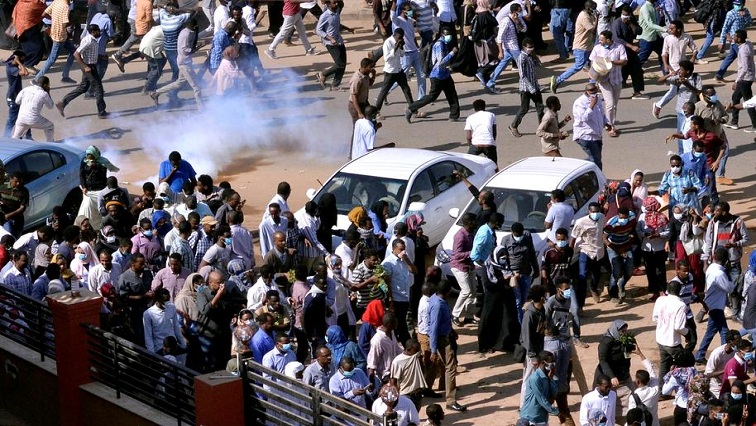Sudanese security forces shot dead four people during a crackdown on nationwide protests on Thursday, a doctors’ committee said, as tens of thousands of people marched against military rule.
Security forces fired tear gas and stun grenades as protesters marched through Khartoum and the neighbouring cities of Omdurman and Bahri towards the presidential palace, Reuters witnesses said.
The Central Committee of Sudanese Doctors said four protesters were shot dead by security forces, at least three of them in Omdurman.
Al Hadath TV quoted an adviser to military leader Abdel Fattah Al-Burhan as saying the military would not allow anyone to pull the country into chaos and that continued protests were a “physical, psychological, and mental drain on the country and would not achieve a political solution”.
Thursday’s protests is the 11th round of major demonstrations since an October 25 coup which saw Abdallah Hamdok removed and then reinstated as prime minister.
The demonstrators have demanded that the military play no role in government during a transition to free elections.
The Forces of Freedom and Change coalition said that security forces “used excessive repression” on Thursday and called on “regional and international communities and human rights organisations to condemn the coup.”
US Secretary of State Antony Blinken wrote on Twitter that he was troubled by reports of lethal force and the United States “stands with the people of Sudan, as they demand freedom, peace, and justice.”
The UN Special Representative to Sudan, Volker Perthes, said that he was “deeply disturbed” by the deaths, adding that “all people have the right to express themselves peacefully; media have to report freely.”
Security forces confronted the protesters about 2 km from the palace in the centre of the capital, a Reuters witness said.
Protesters continued facing tear gas in the city of Bahri past sundown near a blocked bridge connecting it to the capital, another Reuters witness said.
Volleys of heavy tear gas followed protesters into neighbourhoods after being turned away from a bridge.
The Khartoum State Ministry of Health also said in a statement that security forces in Omdurman prevented ambulances from carrying the injured to nearby hospitals, adding that the”scale of repression exceeded expectations.”
The doctors’ committee said security forces arrested an injured man along with medical staff who tried to get him into an ambulance.
Sudan’s sovereign council this week reinstated powers of arrests, detentions and seizures to the intelligence service.
The intelligence service justified the decision by saying that the political situation could turn “catastrophic.”
Amid a communications blackout, most bridges to Khartoum were closed, with at least two blocked by shipping containers.
An army checkpoint with an armoured vehicle was seen at one of the bridges that remained open.
Protesters heading towards the blocked bridge connecting Bahri to the capital chanted: “As much as we sacrifice and die, we won’t be ruled by the boot.”
Internet and mobile services appeared to be disrupted in Khartoum on Thursday.
Reuters witnesses were unable to make or receive domestic and international calls and a source at a telecoms company said an order to shut down internet services had come from the state-owned Sudan National Telecommunications Corporation.
Some people managed to post images on social media showing protests in several other cities, including Port Sudan, Zalenjei, Kassala.
The doctors’ committee said Thursday’s deaths brought the death toll to 52 since crackdowns on protests against military rule began in October.
“I come for the martyred. I’m not going to be tired because some people gave their lives for this. Being tired is nothing compared to that,” said a nurse in Bahri who has attended all 11 protests and gave her name as Jihad.
Several young men wore gloves to allow them to throw back tear gas canisters and stun grenades.


